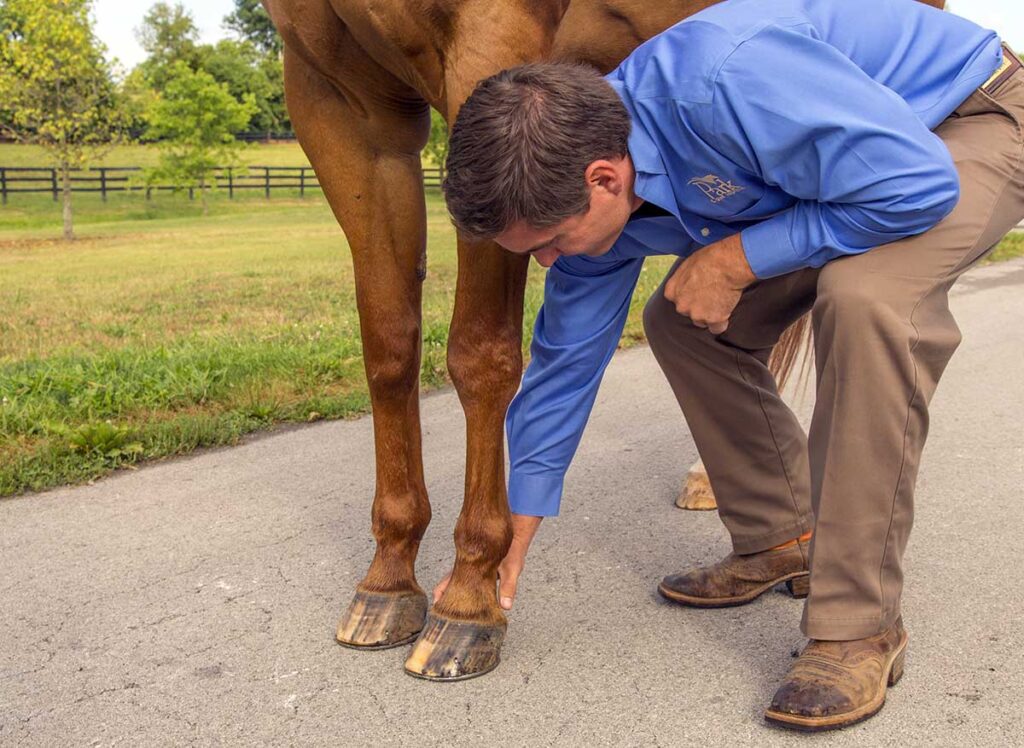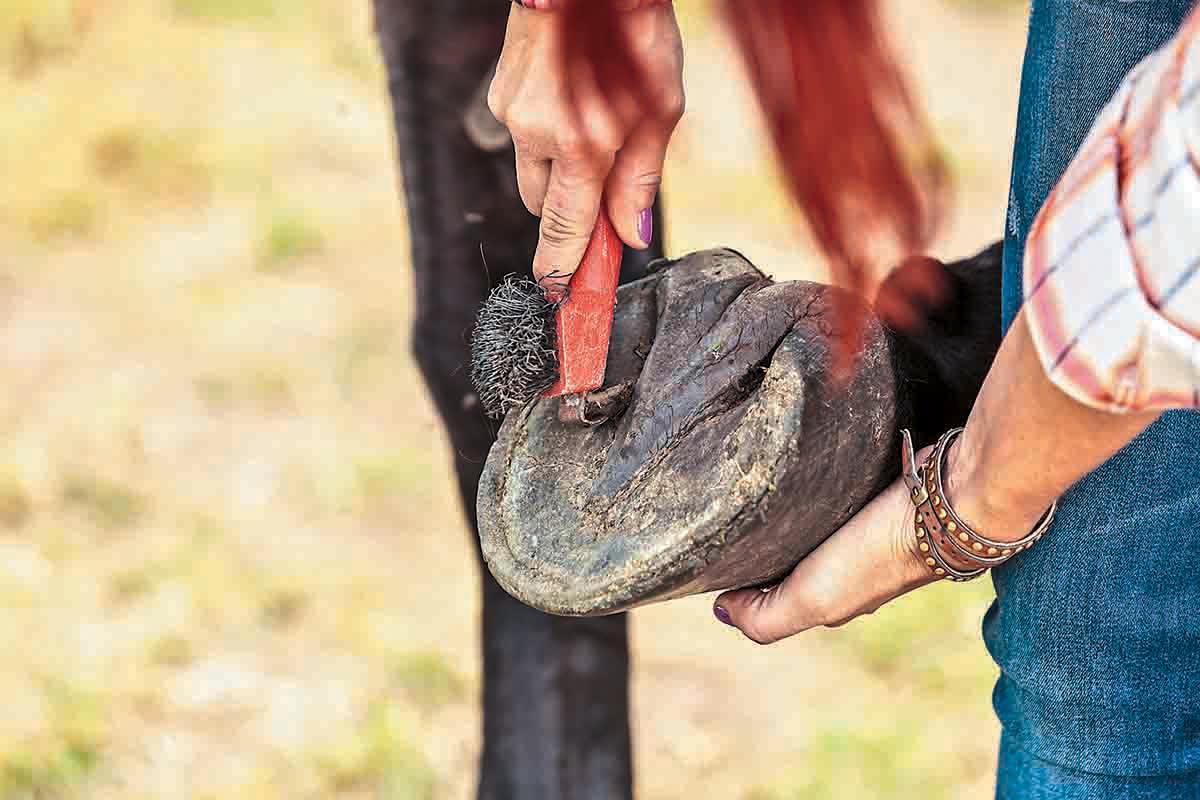For equestrian enthusiasts, the health of their beloved horses is paramount. One critical aspect of horse health is identifying and treating hoof abscesses. Recognizing how to find a hoof abscess can be challenging but is essential for ensuring the well-being of your horse. In this thorough guide, we will explore everything you need to know about hoof abscesses, from identifying symptoms to treatment and prevention strategies.

What is a Hoof Abscess?
A hoof abscess is a painful infection located within the hoof of a horse. This infection typically occurs when bacteria enter through cracks or wounds, leading to a buildup of pus. The confined space within the hoof capsule causes significant discomfort due to the pressure from the abscess.

Causes of Hoof Abscesses
Understanding the causes of hoof abscesses is crucial for prevention and effective treatment. Some common causes include:
- Nail pricks from shoeing
- Injuries or trauma to the hoof
- Stepping on sharp objects
- Poor hoof hygiene
- Structural hoof problems

Signs and Symptoms
Spotting the signs and symptoms early can help in quickly addressing the issue. Common indicators include:
- Lameness
- Heat in the hoof
- Swelling around the hoof area
- Obvious pain when pressing on the hoof
- Pus drainage from the hoof
Lameness
Lameness is often one of the first signs that something is wrong with the hoof. Your horse may show difficulty walking or display uneven gait. In severe cases, your horse might refuse to bear weight on the affected leg.
Heat and Swelling
Increased heat in the hoof and swelling around the area are strong indicators of an infection. These symptoms, along with lameness, are classic signs of a hoof abscess.
How to Find a Hoof Abscess
To find a hoof abscess, follow these steps:
- Observe your horse for any signs of lameness or discomfort.
- Examine the entire hoof, looking for heat, swelling, or any visible wounds or entry points for infection.
- Use hoof testers to apply pressure around different parts of the hoof to identify areas of discomfort. Hoof testers help in locating the exact spot of the abscess.
- If you are unable to identify the abscess, it is recommended to seek the expertise of a veterinarian for a thorough examination.
Diagnosing a Hoof Abscess
If you suspect a hoof abscess, it is essential to confirm the diagnosis with a veterinary professional. Here are common diagnostic methods:
- Physical examination: The vet will conduct a thorough hoof examination using hoof testers to identify sensitive areas.
- Radiographs: X-rays can help rule out other conditions such as fractures or bone defects.
Treating a Hoof Abscess
Once a hoof abscess has been identified, prompt treatment is necessary. Steps include:
- Cleaning and draining the abscess
- Administering appropriate medications
- Ensuring proper hoof hygiene
Cleaning and Draining
Opening the abscess to allow drainage is usually the first step in treatment. Your vet may perform this procedure, or you might be guided on how to do it safely.
Medications
Antibiotics and pain management medications may be prescribed to manage the infection and relieve pain.
Preventing Hoof Abscesses
Prevention is always better than cure. Here are preventive measures to incorporate:
- Regular hoof cleaning and inspection
- Ensuring proper shoeing practices
- Providing a clean and dry environment for your horse
- Regular visits to professional farriers and vets
Long-term Care
Although hoof abscesses typically heal completely with proper care, long-term care is essential to ensure your horse remains healthy. Focus on maintaining good hoof hygiene, regular vet check-ups, and appropriate nutrition to support hoof health.
Hoof Abscesses in Different Breeds
All horse breeds can develop hoof abscesses, but some might be more susceptible due to their hoof structure and genetic predisposition. It is important to understand your specific breed’s needs and consult with experts for tailored care.
When to Call the Vet
If your horse displays severe lameness, shows no improvement despite your interventions, or if the abscess reoccurs, it is imperative to contact your veterinarian for a thorough examination and treatment plan.
FAQs
What should I do if my horse has a hoof abscess?
Follow the steps mentioned in the article: clean and drain the abscess, administer medications, and ensure proper hoof hygiene. Consult your vet for persistent or severe cases.
How long does a hoof abscess take to heal?
The healing time varies, but with proper treatment, most abscesses heal in 1-2 weeks. For more detailed information, refer to this [link](https://prohorseworld.com/how-long-does-an-abscess-in-a-horses-hoof-take-to-heal-2/).
Can I prevent hoof abscesses?
Yes, regular hoof care, appropriate shoeing practices, and a clean environment can significantly reduce the risk of abscesses. Learn more about prevention strategies here [link](https://prohorseworld.com/how-to-prevent-hoof-abscess/).
Conclusion
Finding, diagnosing, and treating a hoof abscess effectively is crucial for maintaining your horse’s health and well-being. By staying vigilant and adopting preventive measures, you can ensure your horse enjoys an active and pain-free life. For more detailed guidelines and professional advice, visiting articles such as [What is a Hoof Abscess?](https://prohorseworld.com/what-is-a-hoof-abscess/) and [Hoof Abscesses: Tips for Treatment & Prevention](https://extension.umn.edu/horse-health/hoof-abscesses) can be extremely helpful.
As an Amazon Associate, I earn from qualifying purchases.
